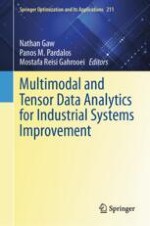This volume covers the latest methodologies for using multimodal data fusion and analytics across several applications. The curated content presents recent developments and challenges in multimodal data analytics and shines a light on a pathway toward new research developments. Chapters are composed by eminent researchers and practitioners who present their research results and ideas based on their expertise. As data collection instruments have improved in quality and quantity for many applications, there has been an unprecedented increase in the availability of data from multiple sources, known as modalities. Modalities express a large degree of heterogeneity in their form, scale, resolution, and accuracy. Determining how to optimally combine the data for prediction and characterization is becoming increasingly important. Several research studies have investigated integrating multimodality data and discussed the challenges and limitations of multimodal data fusion. This volume provides a topical overview of various methods in multimodal data fusion for industrial engineering and operations research applications, such as manufacturing and healthcare.Advancements in sensing technologies and the shift toward the Internet of Things (IoT) has transformed and will continue to transform data analytics by producing new requirements and more complex forms of data. The abundance of data creates an unprecedented opportunity to design more efficient systems and make near-optimal operational decisions. On the other hand, the structural complexity and heterogeneity of the generated data pose a significant challenge to extracting useful features and patterns for making use of the data and facilitating decision-making. Therefore, continual research is needed to develop new statistical and analytical methodologies that overcome these data challenges and turn them into opportunities.
